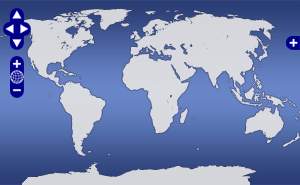Seismic:WideAngle:OBH
Processed Ocean Bottom Hydrophone (OBH) record section images from the Great Meteor seamounts, northeast Atlantic Ocean (R/V Meteor, 1990)
The OBH data was acquired along five ~200 km-long profiles during R/V METEOR cruise No. 12/2 in the summer of 1990. Navigation during the cruise was controlled by the Global Positioning System (GPS). R/V Meteor was equipped with a source array of four 19-litre airguns, providing a total volume of 76 litres. Guns were towed at a depth of ~8 m and fired every 2 minutes at a pressure of ~140 bars, providing a dominant source frequency of 6 Hz. The OBH instruments were a prototype supplied by University of Hamburg and used in conjunction with University of Bergen air guns. The continuously-recorded analogue data were digitized at 100 samples per second and stored on Exabyte tapes. The digitised data was reprocessed in 2022/2023 using a predictive deconvolution and a simple Butterworth bandpass filtered from 4 to 15 Hz, and stored in SEG-Y file format. SEG-Y files have been reduced by 8 km/s. Record sections start at t = 0. These record section images are in JPEG format. The data was collected under Deutsche Forschungsgemeinschaft grant We 690/27 1-4.
Grevemeyer, Ingo
Investigator
GEOMAR
Watts, Anthony
Investigator
University of Oxford
Quality
2
The data have been processed/modified to a level beyond that of basic quality control (e.g. final processed sonar data, photo-mosaics).
License
Data Files
References
Data Citation Information
ISO/XML Metadata
Expand

 Map View
Map View

